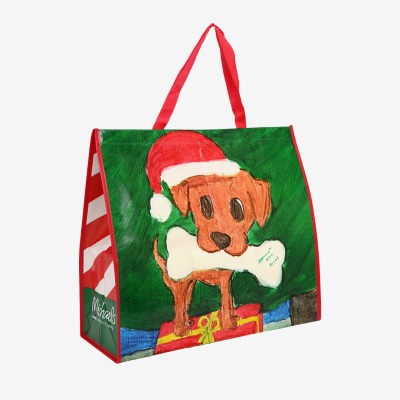Inquiry
Inquiry

As environmental awareness continues to grow, non woven bags have become a preferred alternative to plastic packaging. They are durable, reusable, and easy to customize. Behind this shift are the continuous improvements happening in every Non Woven Bag Factory. From automation to eco-friendly materials, several innovations are transforming how these bags are produced and used.
Modern Non Woven Bag Factory operations now rely heavily on advanced equipment. Automated cutting, printing, and stitching machines reduce manual labor and improve consistency.
Factories use computerized systems to control temperature, pressure, and material feeding during production. This ensures precise bag shapes, cleaner seams, and faster turnaround times. Automation also reduces waste, as machines can optimize fabric use more efficiently than manual processes.
| Automation Benefit | Impact on Manufacturing |
| Computerized Cutting |
Ensures uniform bag dimensions |
| Ultrasonic Sealing |
Creates stronger, seamless joins |
| Automated Printing |
Improves design accuracy |
| Robotic Packing |
Speeds up final packaging and shipping |
Such advancements make production faster and more reliable while maintaining consistent quality standards.
Sustainability is at the heart of modern bag production. Many factories are experimenting with biodegradable and recyclable non woven materials to reduce environmental impact. Some use polypropylene fibers blended with natural plant-based additives that speed up decomposition after disposal.
A forward-thinking Non Woven Bag Factory may also focus on closed-loop systems, where leftover materials are collected, melted, and reused to create new fabric rolls. This practice not only minimizes waste but also lowers overall production costs.
Brand customization plays a major role in the non woven bag industry. To meet these demands, printing techniques have advanced significantly.
Factories now use:
These innovations enable a Non Woven Bag Factory to handle a variety of client requests efficiently—from corporate branding to promotional designs—without compromising color accuracy or durability.
Innovation isn’t limited to design or printing; it also extends to the bag’s usability. Many factories are introducing new bag structures with reinforced handles, foldable designs, and waterproof coatings.
Some factories develop laminated non woven bags, which combine soft texture with added strength and water resistance. Others create thermal-lined non woven bags for food delivery or grocery storage. These improvements make the bags suitable for a wider range of industries, increasing their practicality and market appeal.
In the age of data, digital systems are transforming how factories monitor production. A Non Woven Bag Factory can now track every stage—from raw material entry to final inspection—through digital dashboards. Sensors and barcode systems help identify defects quickly and maintain consistent standards.
Such systems also make it easier for clients to follow order progress, improving transparency and trust.
The non woven bag industry continues to evolve through automation, eco-materials, advanced printing, and smarter management systems. Each innovation allows a Non Woven Bag Factory to operate more efficiently while offering better design flexibility and sustainability.
As global demand for eco-friendly packaging grows, these technological changes are shaping the future of how non woven bags are made—smarter, cleaner, and more adaptable to the needs of modern businesses.
Join Us
For 12 years, we have focused on the production and manufacturing of handbags, constantly innovating and researching.
Seed Message
Megalith